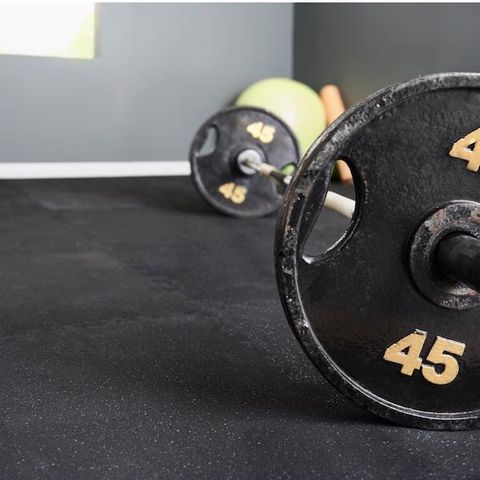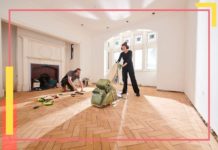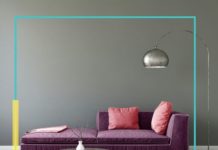If you’ve ever accidentally roundhouse-kicked a floor lamp while following along with an exercise video or dropped a hand-weight on your kitchen tile, you know how difficult it is to work out at home without a designated space. When you’re ready to carve out space for your own home exercise room, installing the proper flooring is critical for both your physical health and the longevity of your freshly-created workout zone.
Before getting started, think about which area of your home is the most conducive to becoming a gym. Look for spaces that are potentially underutilized—like an extra bedroom that’s become “storage” or a sunroom that’s seen better days—or areas that provide a clean slate for laying new types of flooring, like a partially-finished concrete basement or garage.
After selecting your spot, think about what kind of workouts you enjoy doing, the equipment involved, and what kind of flooring best matches those needs. The Home Depot has several flooring types to suit different workouts, like carpet tiles, vinyl flooring, and interlocking rubber. You’re likely going to be up close and personal with the flooring in a home-gym on a regular basis—whether you’re doing pushups or simply sitting down to stretch after a workout—so before you pull on your new workout pants, take a second to think about your workout from the ground up.
Carpet
Low-pile carpet tiles are an overwhelmingly popular choice for workout rooms. They provide cushion that helps prevent joint pain, have a low risk of slip-and-falls from sweating, and are generally resistant to nicks and dings from equipment like kettle balls or free weights. (Word to the wise: if you’re planning on swinging around anything even remotely heavy in your workout room, it’s best to stay away from hardwood or tile flooring—they’re too damage prone.)
What’s more, as general contractor Mark Clement of My FixItUp Life points out, carpet tiles are easily removed and replaced. This reduces the risk of sweat and moisture build-up that can become trapped beneath the surface during workouts—a common issue with wall-to-wall carpet in workout rooms.
Word to the wise: if you’re planning on swinging around anything even remotely heavy in your workout room, it’s best to stay away from hardwood or tile flooring—they’re too damage prone.
Vinyl
Vinyl flooring is a strong choice for basement-to-gym conversions because it’s mold and mildew resistant (always a plus when you’re underground) and comes in a wide variety of styles. It does have less shock-absorbency than other flooring, however, so if you’re planning on burpee-ing on a regular basis, consider something that will be a bit kinder for repetitive motion, like cork, which has the added value of being eco-friendly.
Rubber or Foam
And if you’re serious about your workouts—and in the market for making your home-gym feel like a commercial gym—commit to rubber or foam flooring. Both are sold in interlocking puzzle-style pieces, so they’re easy to install over pretty much any other type of pre-existing flooring: carpet, laminate, concrete—you name it.
Selecting one material over the other depends largely on the intensity of your workouts and frequency of your iron-pumping or Zumba dancing. Rubber flooring is the gold-standard for high-impact, frequent workouts because of its durability (particularly against dropped weights) and ease of upkeep—but has a relatively high price point.
Foam, on the other hand, is less expensive, and well-suited to support any exercise that requires a lot of up-and-down motion, like HIIT workouts. While not as resilient as rubber (it can dent over time), it comes in a wider range of patterns—like this wood-façade—instead of just black.
Whether you’re grooving to the latest exercise dance craze or trying to beat your deadlifting personal best, your workout flooring is the starting point for a commitment to health and wellness. Get the benefits of a professional gym, minus the grunting weightlifters.










































